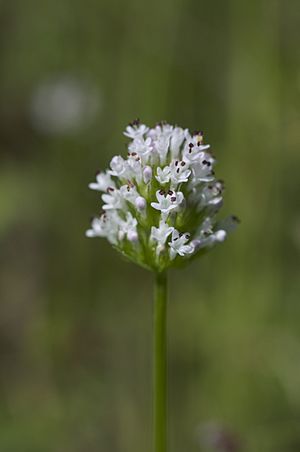Longhorn seablush facts for kids
Quick facts for kids Longhorn seablush |
|
|---|---|
 |
|
| Scientific classification | |
| Genus: |
Plectritis
|
| Species: |
macrocera
|
Plectritis macrocera is a type of flowering plant. People often call it longhorn seablush or white plectritis. It belongs to the honeysuckle family. This plant is known for its pretty clusters of small, pale pink to white flowers.
Contents
What is Longhorn Seablush?
Longhorn seablush is an annual herb. This means it grows from a seed, flowers, makes new seeds, and then dies, all within one year. It stands straight up and can grow quite tall. It usually reaches between 60 and 80 centimeters (about 2 to 2.5 feet) high.
Where Does Longhorn Seablush Grow?
You can find this plant in western North America. It grows from British Columbia in Canada, down through Montana, and into California in the United States. It's a common plant in many different places. You might see it in mountains, valleys, open grasslands called "steppe," and even near the coast.
What Does Longhorn Seablush Look Like?
Its Leaves
The leaves of the longhorn seablush grow in pairs. They are on opposite sides of the stem and are spaced out. Each leaf is shaped like an oval or a slightly longer oval. They have smooth edges. These leaves can be up to 4.5 centimeters long and 2 centimeters wide. The leaves higher up on the stem do not have a small stalk, called a petiole, that connects them to the stem.
Its Flowers
The flowers of the longhorn seablush grow in a dense cluster. This cluster looks like a cylinder or a head. The flowers themselves are usually pale pink to white. Each flower is less than a centimeter long. The main part of the flower, called the corolla, is divided into five small parts, like petals. It also has a short, blunt spur, which is a small pouch or tube that sticks out from the flower.

